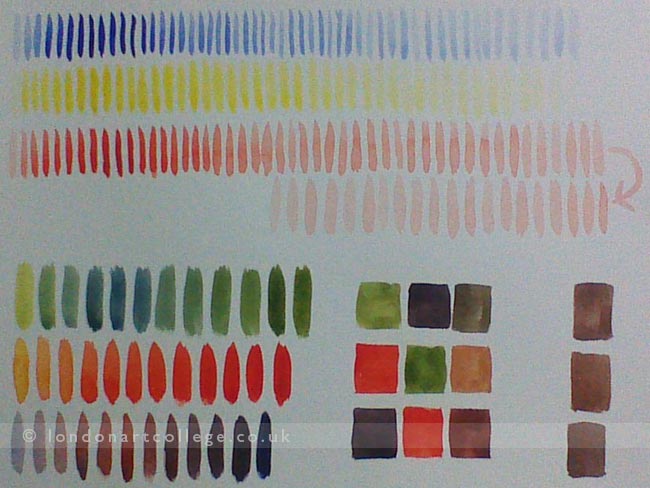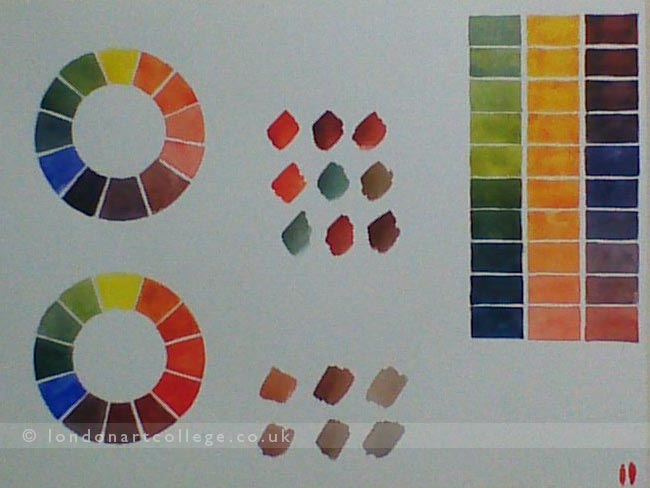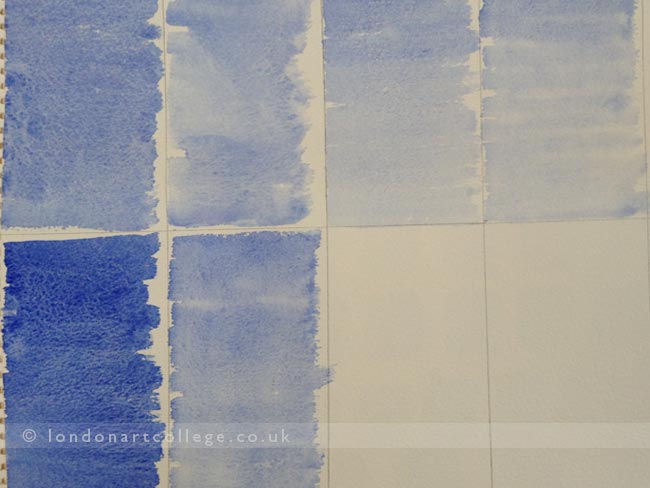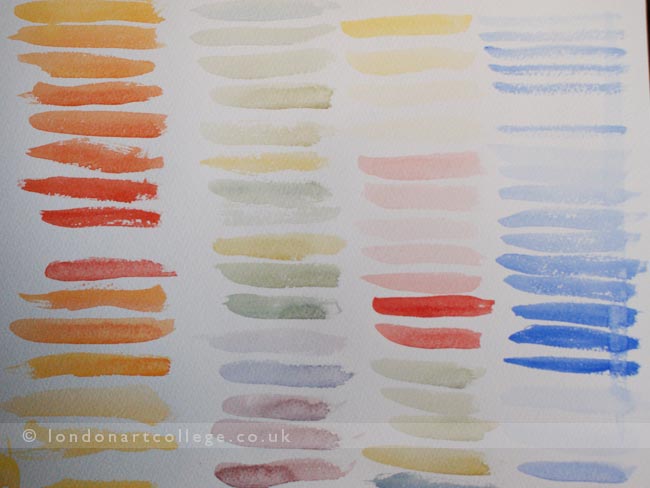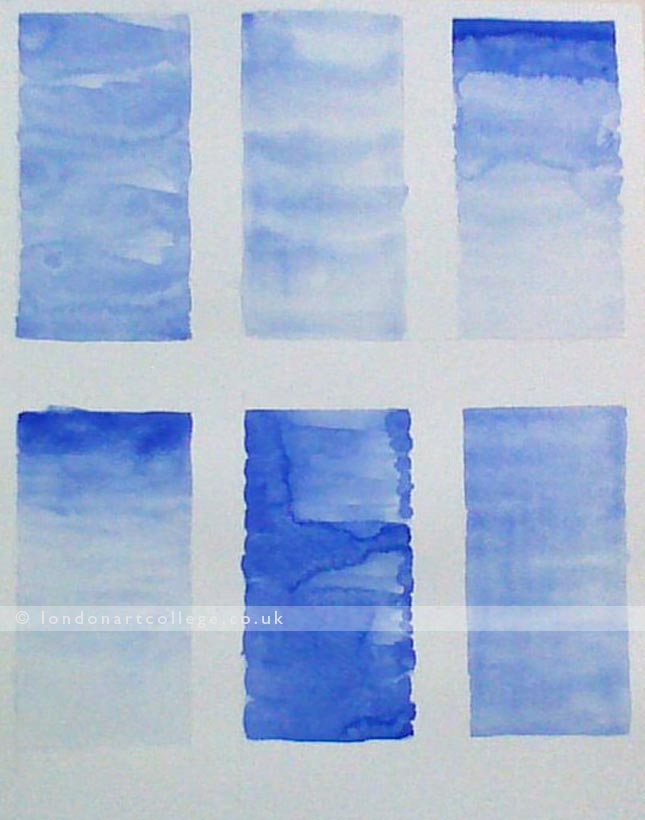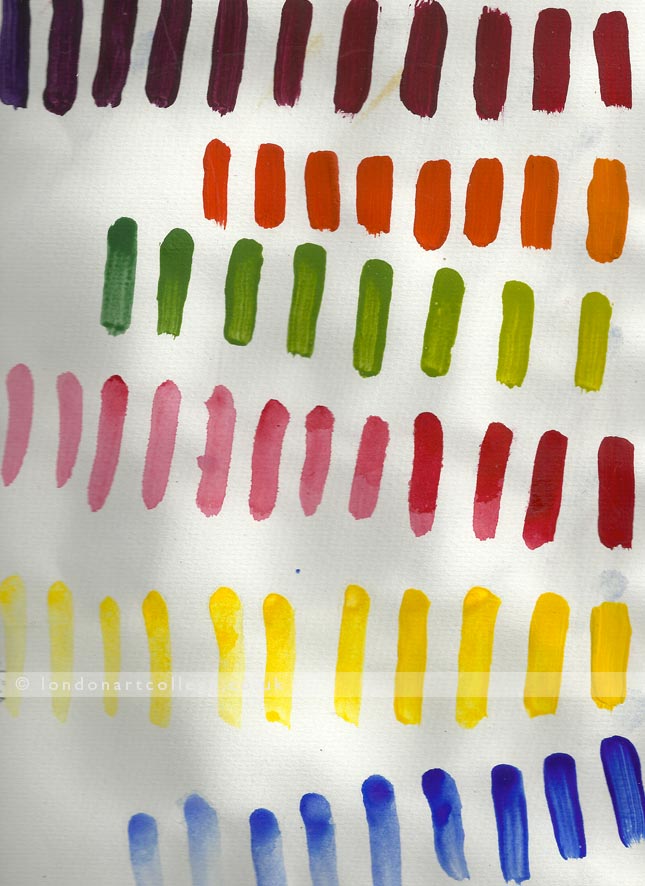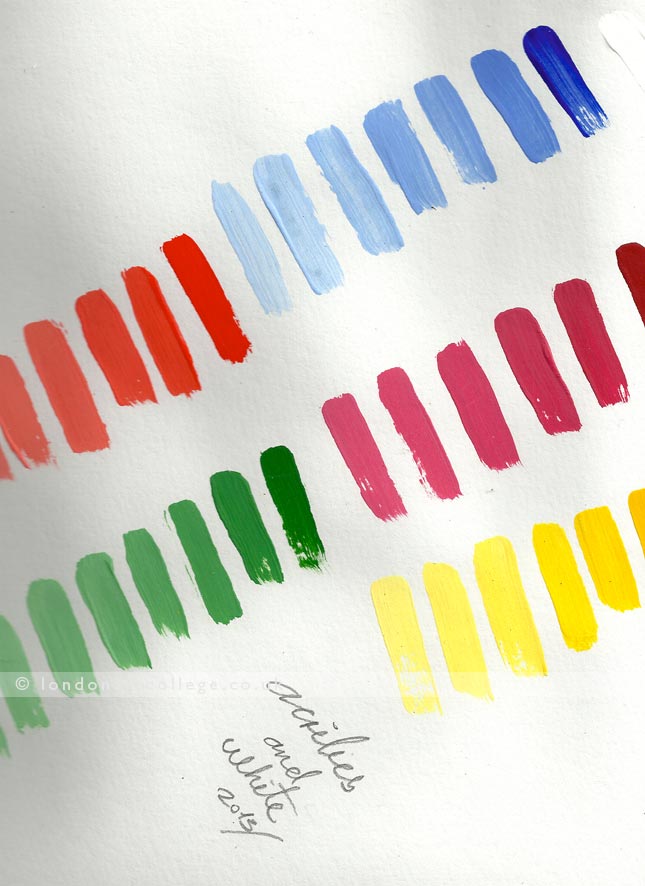In general, most professional artists create colour mixing charts for their paintings. It enables artists to be thoroughly familiar with their colours and helps them to learn which colours mix well and which colours perhaps don’t. It can also be helpful when mixing colours while working on paintings either in the studio or Plein Air.
Our students who study our Learning to Paint Course, have the opportunity to experiment with their colours and show their colour pallets along with their paintings to their tutor. This not only helps students to understand the colours they are using, however it also helps our tutors understand how students managed to create the particular range of colours they are using.
Students might be interested in reading how Bridget O’Connor creates her colour charts. She has made many – they are a must see! There is even a template which you can download and print to use for your own colour charts. Bridget explains very clearly how important colour charts are and we have added a snippet of the page below. You can access the full page here – Artists Network – Colour Charts
Imagine that you’re painting the stem of a flower and that, just under the flower, the colour shifts. If you’ve got a colour chart to consult, you’ll have a good idea how to match that change in colour. If you’re painting a landscape, you don’t want the grass to be one, unvaried green because the effect would be flat and uninteresting. You want to create variety in your greens, and consulting your colour chart will inform you of choices you may not have thought of on your own: for instance, violet mixed with Hooker’s green or indigo mixed with raw sienna.
Our students have created a number of colour charts and we have added just a few of them below. If you have a colour chart you would like to share, you are more than welcome to email it to us at any time!

